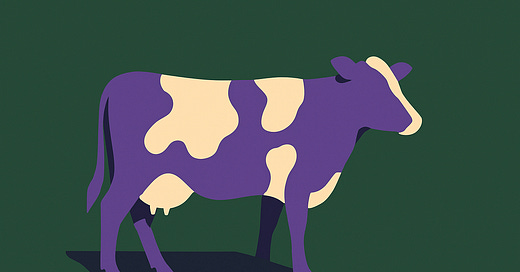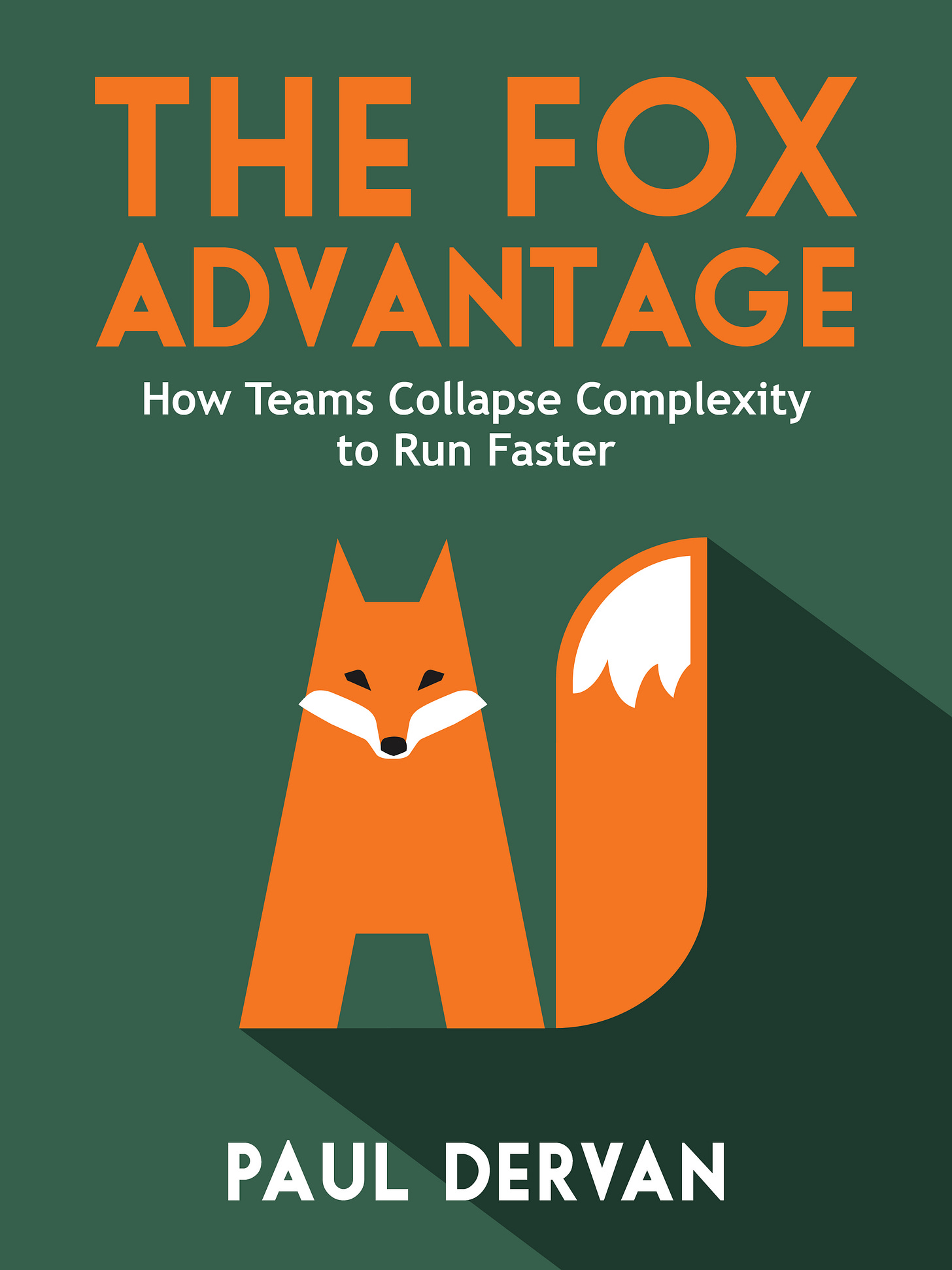Chapter 5: Average is the new invisible
From "The Fox Advantage" by Paul Dervan | Part 1: What Just Collapsed
My family shops like extremists - not because we're picky, or because we're cheap, but because algorithms trained us to forget that average things exist.
Our shopping basket tells the story: top-shelf pistachios next to rock-bottom cereal. Fancy runners beside discount flip-flops. Expensive shampoo (not mine) and €1.99 body wash. We're an ordinary, average household, that ignore the average. By design, but not our design.
We’re not alone. Google Maps has a button that lets you filter out anything below 4.5 stars. Just tap it. Every decent-but not-exceptional business vanishes. That's not a search feature. That's a Delete Average button.
Clearly the robots read Seth’s “Purple Cow”
Seth Godin talked about being remarkable decades ago, with his wonderful ‘Purple Cow’ book. Clearly the robots have been swotting up on their marketing and decided to just go ahead and implement this reality.
Seth’s insight twenty-plus years ago: be remarkable or be invisible.
I remember it. It’s a good book. His general thesis was the way to win was to create something worth talking about - a purple cow in a field of ordinary brown ones. Most of us don’t. Because it’s hard. Bit like fame campaigns. They are the most profitable - but not easy to pull off. So while we settle for ok, our robot friends are off building a world for us where only purple cows survive?
Amazon's first three search results capture 64% of clicks. Products with 4.5+ stars get three times more attention than ones slightly less impressive - the ones that get between 4.0 and 4.4 stars. Their Amazon “Buy Box” dominates sales but only rewards extremes - lowest prices or highest performance.
This creates a squeeze. If you're not the cheapest option, you better be exceptional at delivery speed, customer service, and maintaining high ratings. There's very little room for "decent price with ok service."
No middle ground. Just best or cheapest.
This isn't marketing's crisis. It's our opportunity.
Long run, this might be a good thing. For one, let’s stop testing into sameness. A/B testing has its value. I spent a decade in direct marketing. But this type of testing is about efficiency, not necessarily effectiveness. To stand out, we need remarkable, unforgettable, even weird.
Every time we optimize for "good enough," we're optimizing for invisibility. The middle wasn't murdered. It was simply made inefficient. And efficiency is all the robots care about.
No room for beige cows.
What just collapsed
This is the end of Part 1. These last five chapters weren't about different problems. They were about the same collapse.
A recap:
Chapter 1 was about structure. The marketing department autopsy. The layered, titled, ritualized system we built for a world that no longer exists.
Chapter 2 was about execution. The robots moved in. AI made average production free. Shifted value from polish to judgment.
Chapter 3 was about control. The algorithm became the gatekeeper. We lost visibility. Now we compete with expectations, not just competitors.
Chapter 4 was about competition. We're not fighting in categories anymore. We're fighting for algorithmic shortlist status. The system decides who gets seen.
This chapter 5 was about the middle. The once-safe compromise between quality and cost where most brands lived.
That's what collapsed.
Part 2 is next. I’ve called it "Better Together" and it's about how humans stay essential when AI handles the execution.











great Paul thanks